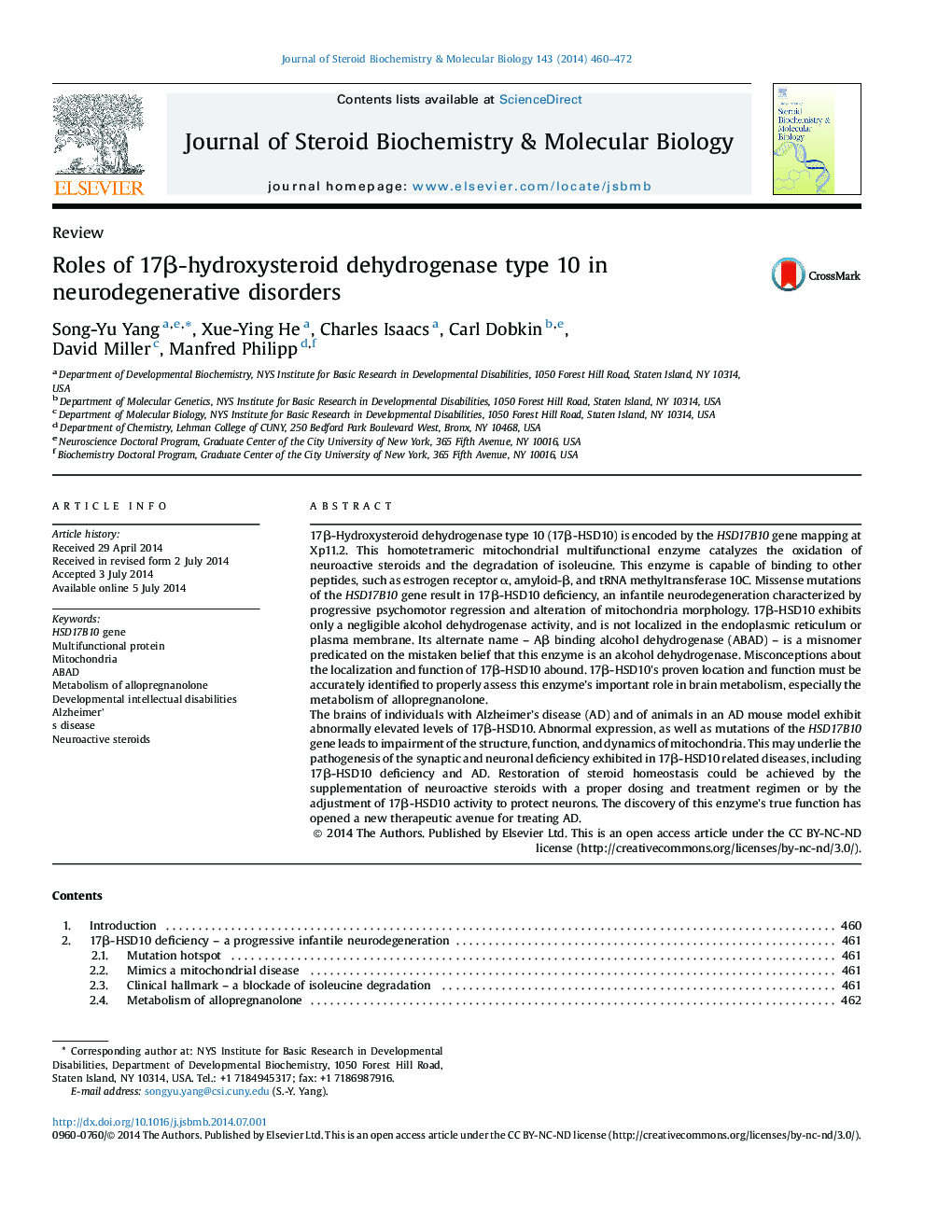| Article ID | Journal | Published Year | Pages | File Type |
|---|---|---|---|---|
| 8338806 | The Journal of Steroid Biochemistry and Molecular Biology | 2014 | 13 Pages |
Abstract
The brains of individuals with Alzheimer's disease (AD) and of animals in an AD mouse model exhibit abnormally elevated levels of 17β-HSD10. Abnormal expression, as well as mutations of the HSD17B10 gene leads to impairment of the structure, function, and dynamics of mitochondria. This may underlie the pathogenesis of the synaptic and neuronal deficiency exhibited in 17β-HSD10 related diseases, including 17β-HSD10 deficiency and AD. Restoration of steroid homeostasis could be achieved by the supplementation of neuroactive steroids with a proper dosing and treatment regimen or by the adjustment of 17β-HSD10 activity to protect neurons. The discovery of this enzyme's true function has opened a new therapeutic avenue for treating AD.
Related Topics
Life Sciences
Biochemistry, Genetics and Molecular Biology
Biochemistry
Authors
Song-Yu Yang, Xue-Ying He, Charles Isaacs, Carl Dobkin, David Miller, Manfred Philipp,
